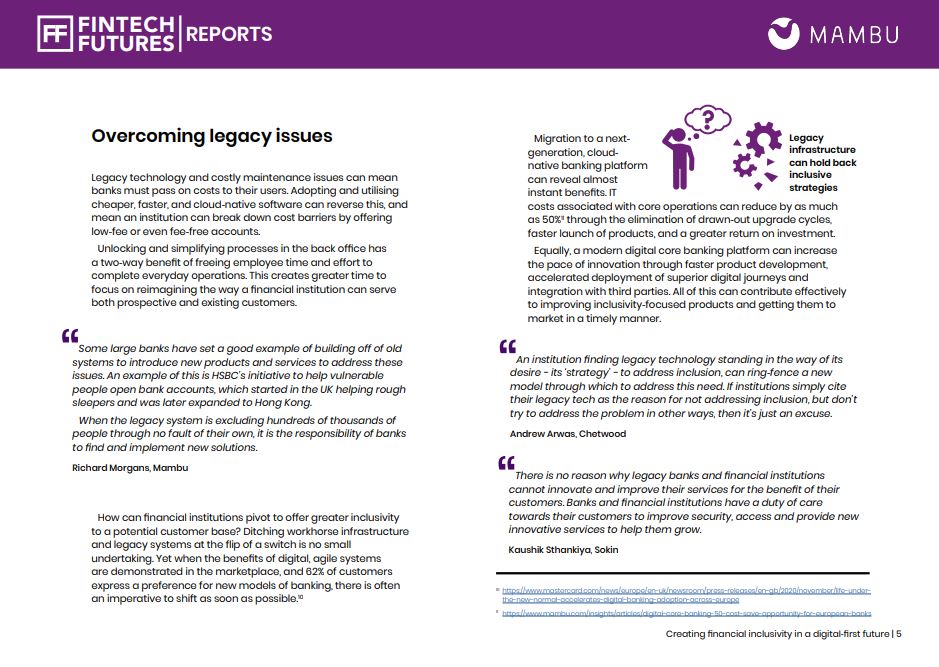69% of adults have access to a bank account
75% rely on money transfer services or fintechs for payments
$3.7 trillion is the predicted valuation of the digital finance market by 2025
FinTech Futures, in collaboration with Mambu, has launched its latest report.
We investigate just what it means to be underbanked and unbanked in today’s societies, and why it behoves financial institutions to offer more inclusive products and services.

How can banks serve rural and underbanked communities?
As the industry takes a collective step forward, or as some take a collective step to catch up with fast movers, others are left behind.
While more options than ever before appear for users needing services from basic accounts to commercial lending, many still struggle to access them from traditional providers.
The rate of global financial inclusion has increased in the past ten years.
Latest figures from the World Bank show that 69% of adults have access to a bank account or mobile money provider globally, an increase from 51% in 2011.
Despite this, 75% of consumers rely on a money transfer service or payments fintech to transfer their cash.

Can a back office revamp unlock the secret?
The part financial services and inclusion can play in restarting and supporting the global economy in the wake of the pandemic can’t be ignored.
Ensuring access to financial services appears in more than half of the UN’s Sustainable Development Goals.
The digital finance market is estimated to be worth $3.7 trillion to those economies between now and 2025.
So why, despite growing numbers of people having access to digital services, are we still seeing a not-insignificant number of people locked out of the system?
What can financial institutions look to when trying to encourage better interaction from traditionally underserved communities? We investigate.
Our report features expert insight from the market, including:
- Richard Morgans, general manager for UK and Ireland at Mambu
- Andrew Arwas, head of corporare development at Chetwood Financial
- Kaushik Sthankiya, chief commercial officer at Sokin
Credit: Source link


Comments are closed.